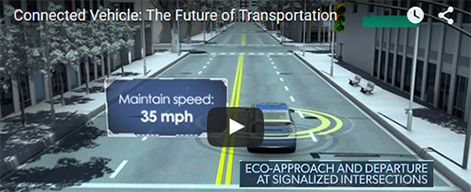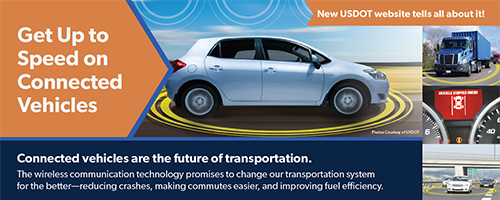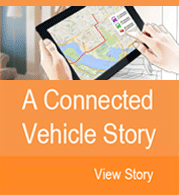Resources
$341 to $350. . . is about how much connected vehicle technology will add to the cost of a new car in 2020. That cost is
projected to fall to $209 to $235 by 2058, as mass production of vehicles with connected vehicle technology increases.
Summary: Compared to other alternatives, such as radar, cameras, and other sensors, connected vehicle technology is less expensive.
It also has significant advantages over these other in-vehicle technologies. Connected vehicle technololgy has a greater range, allowing you to receive an alert about a dangerous situation much sooner, giving you more time to react and prevent an accident. It also can "see" around corners and "through" objects, alerting you to potentially hazardous situations out of your view that you aren't aware of.
42 hours. . . is the amount of time a typical highway user sits in traffic every year due to congestion, according to the 2015 Urban Mobility Report. That's more than a full week of vacation!
Summary: Studies show that connected vehicle mobility applications may be able to cut travel-time delays caused by congestion by more than a third.
Read more: 2015 Urban Mobility Report, Texas A&M Transportation Institute.
1,083 lives. . . is the approximate number of lives that could be saved annually by deploying just two of the many connected vehicle safety applications being developed by the USDOT.
Summary: NHTSA estimates that a connected vehicle safety application that helps drivers safely negotiate intersections could help prevent 41 to 55 percent of intersection crashes.
Another connected vehicle safety application that helps drivers take left turns at intersections could help prevent 36 to 62 percent of left-turn crashes, according to NHTSA.
In addition to the lives saved, just these two applications alone could prevent up to 592,000 crashes and 270,000 injuries each year.
Read more: NHTSA Report--Vehicle-to-Vehicle Communications: Readiness of V2V Technology for Application
USDOT is working with. . . the European Union, Japan, Korea, and with Mexico and Canada on a range of ITS and Connected Vehicle technologies.
28 percent. . . is the percentage of the nation's greenhouse gas emissions that are attributed to the transportation sector.
Summary: Connected vehicle technology has the potential to make a significant contribution to reducing the environmental impact of surface transportation.
It'll help you make eco-friendly travel choices and assist you in making fewer stops and starts when driving. Special dynamic “eco-lanes” on highways, similar to today's HOV lanes, but for high occupancy, low emissions vehicles, would use connected vehicle data to reduce the environmental impact of highway users.
And there are many other potential environmentally-friendly applications.
















